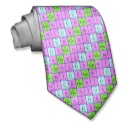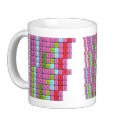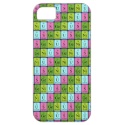|
|
Reference type: Journal
Authors: Takeda K, Kobayashi T
Article Title: Hybrid molecularly imprinted membranes for targeted bisphenol derivatives.
Publication date: 2006
Journal: Journal of Membrane Science
Volume: 275
Issue: (1-2)
Page numbers: 61-69.
DOI: 10.1016/j.memsci.2005.09.004
Abstract: Bisphenol A (BPA) imprinted polymer, which was prepared with BPA methacrylate and divinyl benzene (DVB), was hybridized in porous membrane scaffolding of polystyrene (PS), cellulose acetate (CA), nylon 66 (Ny) and polysulfone (PSf) by phase inversion process. Resultant hybrid imprinted membranes showed high capture ability to the BPA having 148, 142 and 158 μmol/g for the hybrid CA, Ny and PSf scaffolds, respectively. Relative to corresponding scaffold polymers in the absence of BPA imprinted polymer, the hybrid PSf membrane had excellent recognition to the BPA. Scatchard analysis to the hybrid PSf scaffold membrane showed equilibrium binding constants of 20,700, 19,100 and 17,300 M-1 for BPA, bisphenol E and bisphenol F, respectively. The permselective separation of 2-(4-hydroxyphenyl)ethyl alcohol (HPA) and the bisphenol derivatives was accomplished by using the hybrid membranes for the mixture solution. Evidence of the separation of the mixture indicated that separation factor of BPA and HPA was estimated as 11.5, 8.1 and 10.8 for the hybrid CA, Ny and PSf, respectively. Effect of hybrid imprinted membrane on the enhanced separation ability was also discussed. ® 2005 Elsevier B.V. All rights reserved
Template and target information: bisphenol A, BPA
Author keywords: molecular imprinted membrane, molecular recognition, Hybrid membrane, adsorption, endocrine disruptor
|


 Genius periodic table name tie
Genius periodic table name tie







 Chocolate biscuit periodic table mug
Chocolate biscuit periodic table mug







 Genius periodic table iphone 5 case
Genius periodic table iphone 5 case






